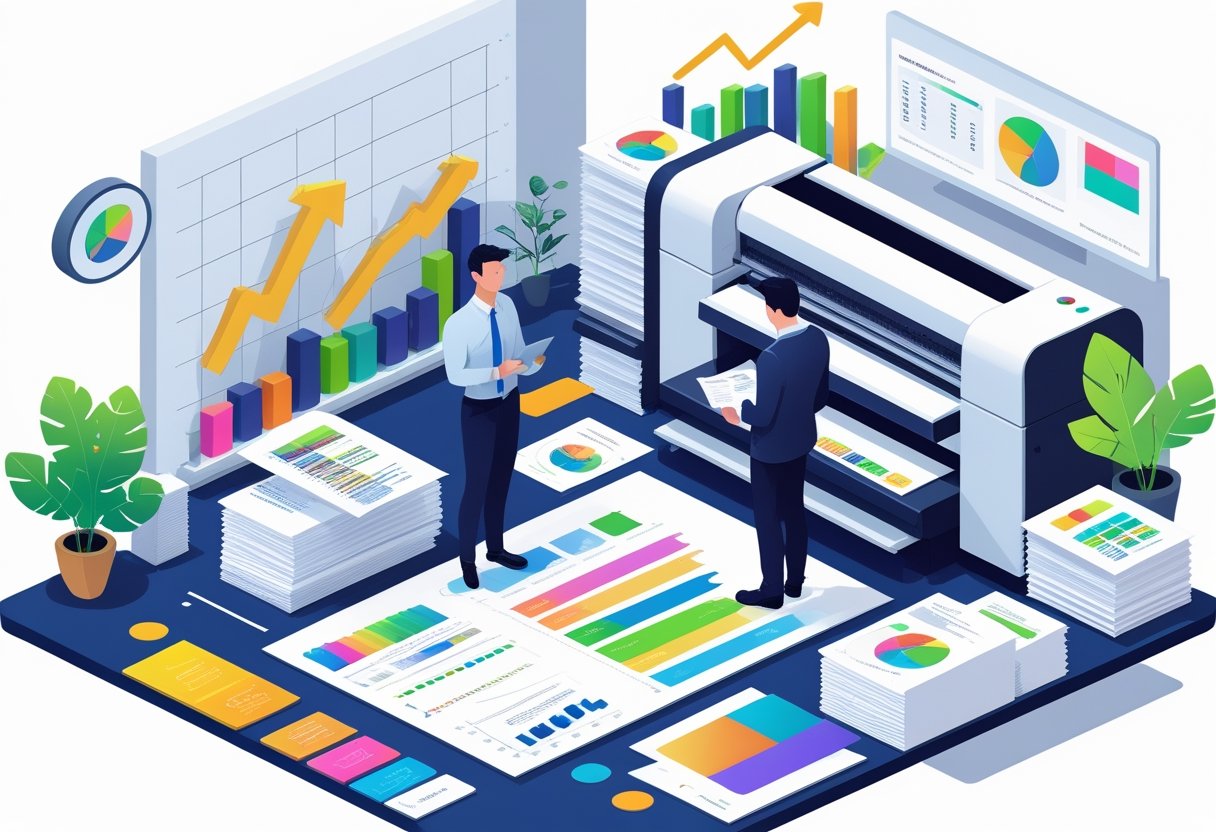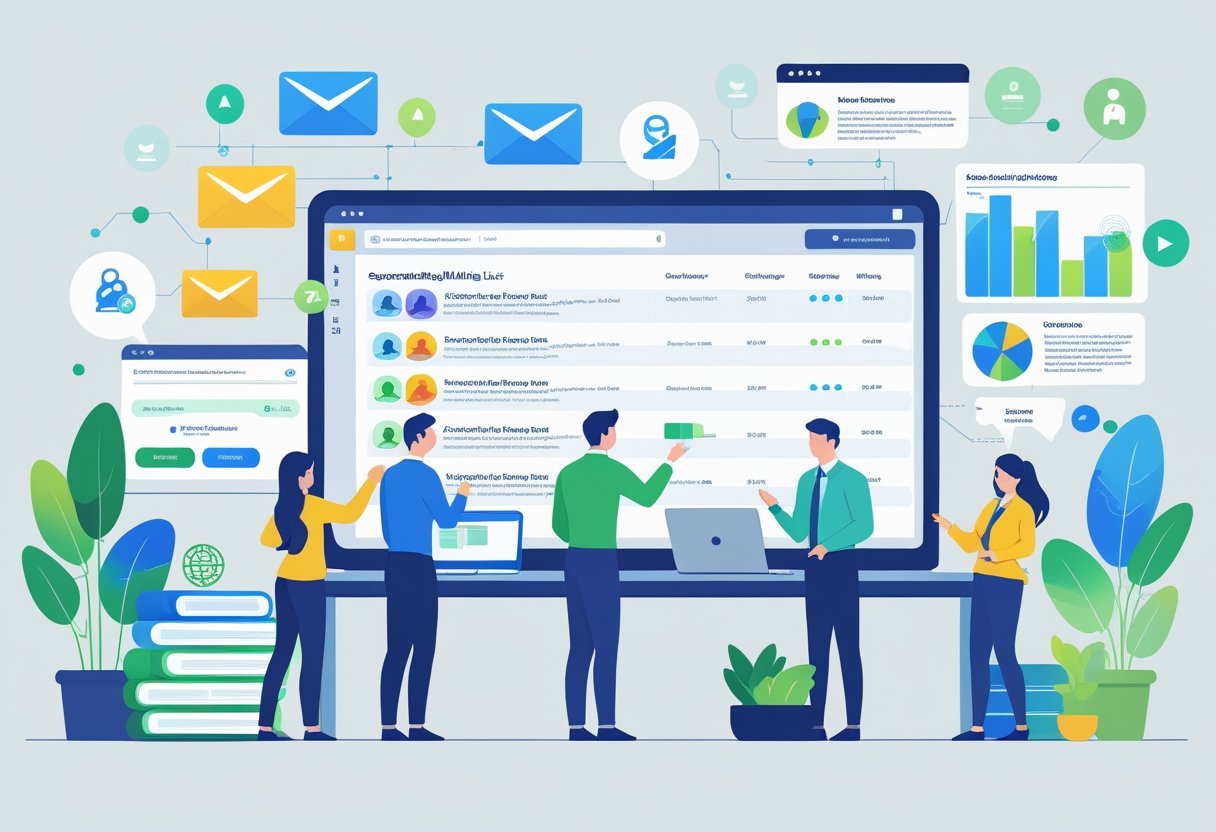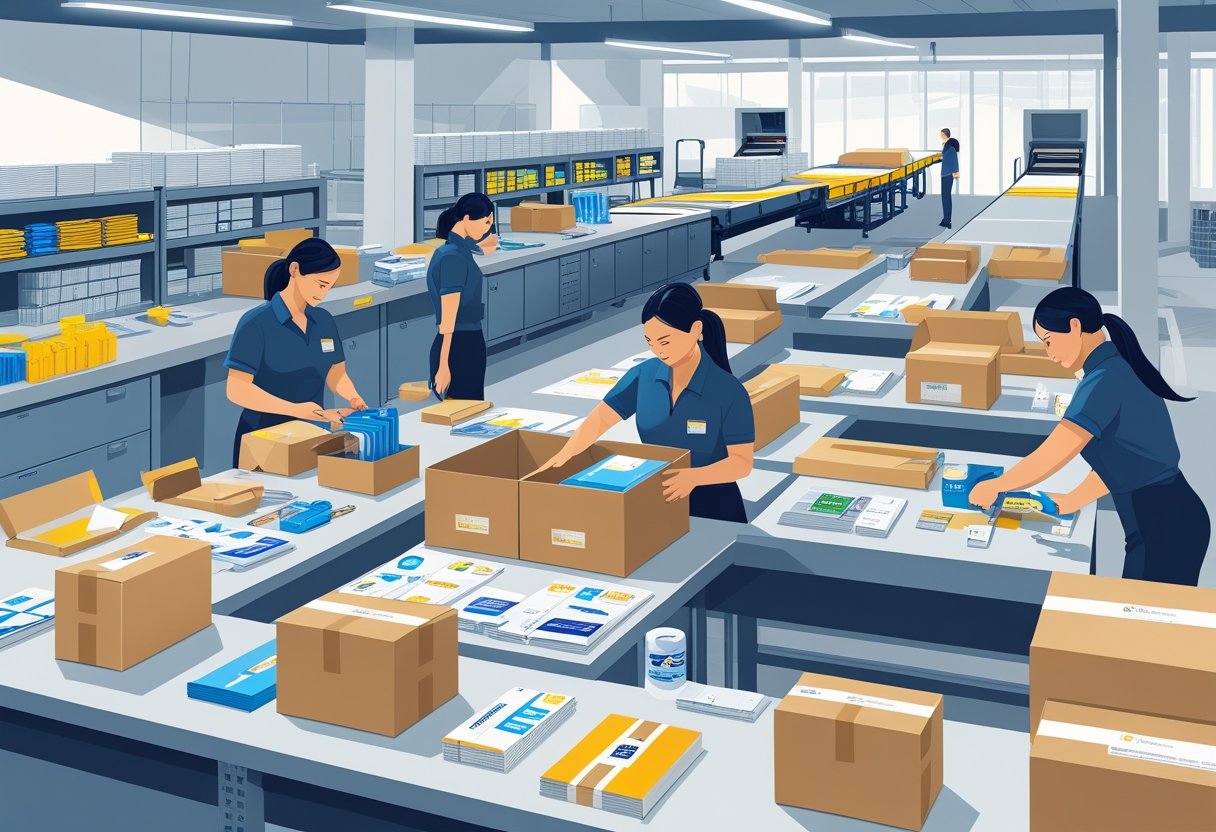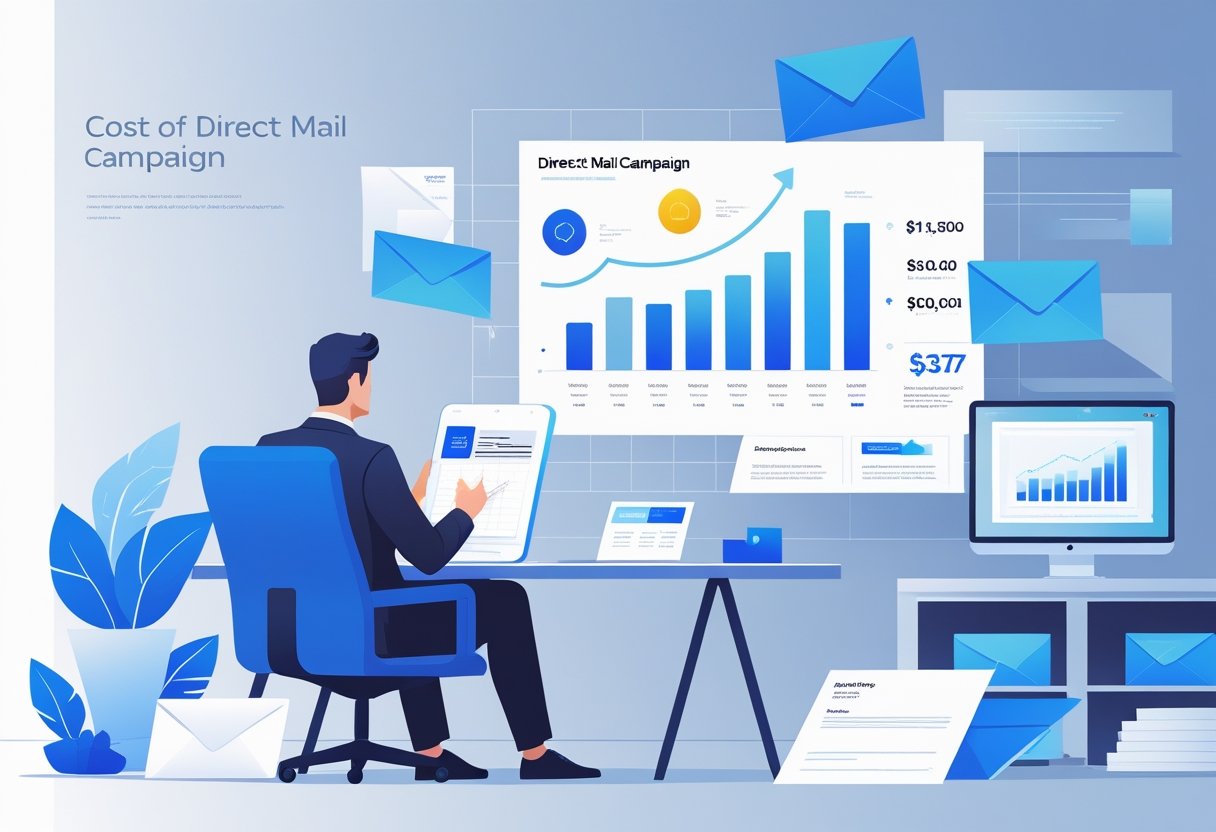In today's competitive market, finding ways to save on commercial printing can significantly impact your bottom line. By understanding the key strategies and best practices, you can lower costs without sacrificing quality or efficiency. Implementing effective measures will streamline your printing processes and enhance your overall business operations.
At Mail Processing Associates, we specialize in Comprehensive Mailing and Printing Solutions designed to meet the unique needs of your business. Our expertise allows you to optimize printing tasks, ensuring you receive high-quality results while maintaining a budget-friendly approach. Whether you need to reduce waste or leverage bulk printing options, our tailored services provide the ideal solutions for your specific requirements.
Embracing digital innovations and smart software tools can also transform your printing strategy. From digitizing documents to adopting optimal printing techniques, there are multiple ways to cut costs effectively. With Mail Processing Associates by your side, you gain access to valuable insights that empower you to make informed decisions, ultimately leading to substantial savings.
Understanding Commercial Printing Costs
When managing your business's printing budget, a thorough understanding of the various components that contribute to printing costs is essential. This section breaks down the key elements, highlights often-overlooked expenses, and examines how these costs affect your overall profitability.
Key Components of Printing Expenses
Commercial printing costs encompass several key components. These can include:
- Materials: The type of paper, ink, and other materials significantly affect costs. For instance, high-quality paper or specialty inks can increase expenses.
- Setup Fees: Initial setup costs cover file preparation, editing, and printing machine setup. These can vary depending on complexity and quantity.
- Labor: The time spent by your team or outsourced professionals on design, printing, and finishing processes impacts your overall expenses.
- Equipment: The machinery used, whether leased or owned, contributes to maintenance and operational costs.
By understanding these elements, you can identify areas for potential savings.
Common Hidden Costs Businesses Overlook
Many businesses fail to account for hidden costs that arise in the printing process:
- Shipping Fees: Whether for raw materials or final printed products, these costs can add up quickly.
- Storage: If you order in bulk, the expense of storing these materials can be significant, especially if space is limited.
- Waste: Misprints or excess production can lead to unnecessary costs. Monitoring waste can improve your budget significantly.
- Design Adjustments: Changes requested after the design process may incur additional fees.
Staying vigilant about these often-overlooked expenses can prevent budget overruns.
The Impact of Printing Costs on Profitability
Printing costs can have a direct impact on your business's profitability. High printing expenses can eat into your margins, reducing the funds available for growth or other essentials.
To mitigate this:
- Conduct regular audits of your printing services to identify unnecessary costs.
- Evaluate your printing needs against the services offered by providers.
At Mail Processing Associates, we offer comprehensive mailing and printing solutions tailored to your needs. Our focus on optimizing your processes can lead to significant savings and improve your bottom line.
Understanding and managing these printing costs effectively will help ensure your operations remain profitable and efficient.
Analyzing Print Habits to Save Money
Assessing your print habits is essential for reducing costs in commercial printing. Knowing how and why employees print can help you implement strategies for better efficiency and cost-effectiveness.
Tracking Employee Print Behavior
Monitoring employee print behavior allows you to identify patterns and excessive printing. Utilize print management software to collect data on who prints, what they print, and how frequently.
Set criteria for assessing print usage. This can include:
- Print volume: Identify high-volume users.
- Color vs. black-and-white: Understand the preference for color printing.
- Document types: Determine if unnecessary documents are printed.
By analyzing this data, you can pinpoint areas where changes can significantly reduce costs. For instance, if many employees print color documents, consider switching to a default black-and-white setting.
Setting Printing Policies for Cost Reduction
Establishing clear printing policies can guide employees toward more cost-effective practices. Your policies should be communicated effectively to ensure compliance. Some key policy points include:
- Limit color printing: Specify when color printing is permitted.
- Encourage double-sided printing: This cuts paper usage in half.
- Restrict personal printing: Discourage printing personal documents at work.
Regular training sessions can reinforce these policies and raise awareness about printing costs. By implementing structured policies, you minimize waste and promote a culture of mindfulness regarding printing.
Encouraging Efficient Print Habits
Promoting efficient print habits within your organization can further contribute to cost savings. Encourage employees to think before they print. Methods to instill this include:
- Adopting digital alternatives: Suggest using digital documents over printed copies whenever possible.
- Utilizing a print preview feature: This reduces errors that can lead to unnecessary reprints.
- Implementing a print quota: Setting limits can motivate employees to be more mindful.
Maintaining open communication about print habits can also lead to more responsible behavior. By opting for a partner like Mail Processing Associates, you can gain access to tailored printing solutions that help streamline your processes and further reduce costs.
Optimizing Paper Usage for Cost Efficiency
Efficient paper usage can significantly reduce your commercial printing costs. By implementing targeted strategies, you can lower waste and improve sustainability in your operations. Here are some key areas to consider.
Reducing Paper Consumption
Start by assessing your current paper usage habits. Evaluate what documents are essential to print and which can be shared digitally. Encourage your team to minimize unnecessary prints by adopting a clear policy on document sharing.
Implementing a culture of digital documentation can help you track down excessive printing. Utilize software solutions to convert files to PDF for easy sharing. This not only saves paper but also enhances accessibility to documents. Establishing a review process before printing can further tighten control over paper consumption.
Double-Sided and Multi-Page Printing Strategies
Adopting double-sided printing, also known as duplex printing, can cut paper usage in half. Many printers allow you to set this as the default option, automatically promoting efficiency.
Incorporating multi-page settings is equally beneficial. Instead of printing one document per page, combine multiple pages in a single print job. This method streamlines documents, reduces ink usage, and cuts costs significantly. Regular audits can help you identify printing patterns and areas for improvement.
Choosing Cost-Effective Paper Types
Selecting the right type of paper can make a considerable difference in your printing expenses. Opt for lighter weight paper for everyday prints, which can be more economical without sacrificing quality.
Additionally, you might consider recycled paper, which is often cheaper and aligns with environmentally friendly practices. Assess your options to find the best balance between cost and quality.
At Mail Processing Associates, we provide tailored solutions that help you optimize your printing processes efficiently. Our services are designed to support businesses aiming to achieve greater cost-effectiveness in their mailing and printing.
Improving Your Printing Environment
Optimizing your printing environment is essential for increasing efficiency and reducing costs. Focus on practical strategies to streamline operations, enhance collaboration, and maintain energy efficiency in your workplace.
Consolidating Print Devices
Consolidating print devices can significantly reduce costs and improve workflow. Instead of multiple printers scattered throughout your office, consider implementing a centralized printing system. This setup not only minimizes maintenance but also reduces the consumption of materials and energy.
Assess the volume of printing needs in each department. Choose high-capacity multi-function devices that handle printing, scanning, and copying. This approach simplifies management and allows you to control print jobs more effectively, leading to reduced waste.
Utilize software solutions for managing the print queue, enabling you to monitor usage patterns. By doing this, you can identify inefficiencies and optimize the number of devices needed. Fewer devices often lead to lower operating costs and better resource allocation.
Implementing Print Neighborhoods
Creating print neighborhoods fosters a collaborative atmosphere while maximizing efficiency. Organize printers in close proximity to the teams that use them most frequently. This strategic placement reduces the time and distance employees spend retrieving their printed materials.
Designate specific printers for particular departments based on their unique printing requirements. For example, high-volume teams can utilize less frequently used high-capacity printers, while departments with lighter workloads might benefit from smaller devices. This tailored approach ensures everyone has access to the resources they need without unnecessary clutter.
Encourage a conscious printing culture by educating employees about best practices. Provide guidelines on double-sided printing and using draft modes when appropriate. A well-planned print neighborhood enhances communication and streamlines printing operations, contributing to your overall efficiency.
Maintaining Energy Efficiency
Maintaining energy efficiency in your printing environment is critical for reducing costs and minimizing environmental impact. Start by selecting energy-efficient printers that comply with ENERGY STAR standards, which use significantly less energy than conventional models.
Incorporate settings such as sleep mode or auto-off features to minimize energy consumption when devices are not in use. Educate your staff on the importance of switching off printers during non-working hours as a simple yet effective way to save energy.
Regular maintenance is key. Schedule routine check-ups to ensure that printers are functioning optimally. Address any issues promptly to prevent wasted energy and resources. By focusing on energy-efficient practices, you can lower your operational costs significantly while contributing to sustainability goals.
At Mail Processing Associates, we provide comprehensive mailing and printing solutions designed to help you create the most efficient printing environment possible. Our tailored services meet the needs of any business looking to optimize their processes.
Leveraging Managed Print Services
Managed Print Services (MPS) provide businesses with the tools necessary to optimize printing efficiency, reduce costs, and streamline operations. By adopting these services, you can achieve significant improvements in your printing environments.
Benefits of Managed Print Solutions
Utilizing managed print solutions offers several advantages. One key benefit is cost reduction. These services can help you cut spending by up to 30% through improved efficiencies and optimized print environments.
Additionally, MPS allows you to centralize and manage your printing processes. This means less downtime and better device utilization, which translates into increased productivity for your team.
With Mail Processing Associates, you can receive tailored solutions designed specifically for your business needs, ensuring that you get the right service to enhance your printing operations effectively.
Automating Supply Management
Effective automation in supply management is essential for maintaining efficiency. MPS helps you automate the ordering process for printer supplies, ensuring that you never run out of essential materials like ink and paper.
Implementing smart tracking systems allows for seamless inventory management. You receive alerts when supplies are low, which reduces manual oversight and prevents disruptions in your print workflow.
By partnering with Mail Processing Associates, you can take advantage of these automated solutions, freeing up time for you to focus on other critical areas of your business.
Monitoring and Reporting for Continuous Improvement
Continuous monitoring and reporting are critical components of managed print services. Through advanced analytics, you can track print usage and identify patterns. This information helps you pinpoint areas for improvement.
Regular reporting allows your team to make informed decisions based on real data, such as which printers are underperforming or what your printing costs are at any given time.
Managed print services provide the necessary insights to make your printing operations more efficient. With Mail Processing Associates, you can rely on expertise that leads to measurable improvements in your printing processes.
Advanced Strategies for Reducing Printing Costs
Implementing effective strategies to minimize printing costs can greatly impact your business's bottom line. Focus on optimizing workflows and reducing unnecessary expenses. Here are advanced methods tailored for a cost-efficient printing environment.
Switching to Digital Documentation
Transitioning to digital documentation is one of the most effective ways to reduce printing costs. By moving documents to a secure digital format, you significantly cut down on paper and ink expenses.
Utilize cloud storage solutions to facilitate easy access and collaboration. This eliminates the need to print multiple copies for meetings or reviews. Encourage your team to adopt digital tools for note-taking, which can further minimize reliance on paper.
Also, incorporating electronic signatures can streamline document approval processes. Your business will not only save money but also contribute to a more sustainable printing environment.
Optimizing Print Settings and Software
Using the right print settings can drastically reduce costs. Adjusting to print in black and white instead of color can significantly lower ink usage. Implementing duplex printing—printing on both sides—saves paper and cuts costs in half.
Additionally, invest in print management software. Such software tracks usage patterns and identifies inefficiencies in your printing processes. You can set print quotas to control usage and monitor costs closely.
Mail Processing Associates excels in providing comprehensive printing solutions. We help you analyze your printing habits to implement effective policies that keep expenses down.
Investing in Modern, Cost-Efficient Equipment
Using outdated printers can lead to higher operational costs due to inefficiency and frequent repairs. Investing in modern, energy-efficient printers can pay off in the long run. Newer models offer features such as faster print speeds and lower ink consumption.
Consider multi-function devices (MFDs) that can print, scan, and copy. These versatile machines often come with energy-saving features. They also reduce clutter in your workspace, promoting efficiency.
Taking advantage of leasing options can spread costs over time while ensuring you have access to the latest technology. Mail Processing Associates can assist you in choosing the right equipment to optimize your printing processes.
Frequently Asked Questions
Understanding the nuances of commercial printing can lead to significant cost savings. Here are some questions that often arise in this area, addressing effective methods and considerations to help optimize your printing expenses.
What are effective strategies for minimizing ink usage in commercial printing?
To minimize ink usage, consider using draft mode for internal prints. Also, explore options for lighter color options or greyscale printing when appropriate. Implementing strategic design choices, such as avoiding heavy backgrounds, can also make a noticeable difference in ink consumption.
Can bulk printing orders significantly lower overall costs?
Yes, bulk printing orders can reduce costs considerably. The more you print, the lower the per-unit cost becomes. This is due to the economies of scale that large print runs offer, which decreases setup and production costs.
Are there any cost benefits to using alternative printing materials?
Using alternative materials can lead to cost savings, especially if you choose options that are lighter or sourced at a lower price. Additionally, eco-friendly materials may also attract customers who prioritize sustainability, improving your brand image without significantly increasing costs.
How does optimizing page layout contribute to print cost savings?
An optimized page layout can maximize the use of available space on a sheet, reducing waste. By carefully planning the placement of images and text, you can print more efficiently, leading to lower material costs and less wasted paper.
What role does printer maintenance play in reducing commercial printing expenses?
Regular printer maintenance is crucial for optimal performance. A well-maintained printer operates efficiently, which can lead to lower ink usage and fewer errors. Neglecting maintenance may result in higher repair costs and operational inefficiencies.
What is the impact of print resolution settings on commercial printing costs?
Print resolution settings directly affect ink usage and overall print quality. Opting for lower resolution settings for internal documents can save ink. However, ensure that you use higher resolutions for customer-facing materials to maintain the quality and professionalism of your brand.
When seeking solutions that encompass both quality and cost efficiency in commercial printing, consider partnering with Mail Processing Associates. We provide tailored Comprehensive Mailing and Printing Solutions that cater to your business's unique needs.






.png)






